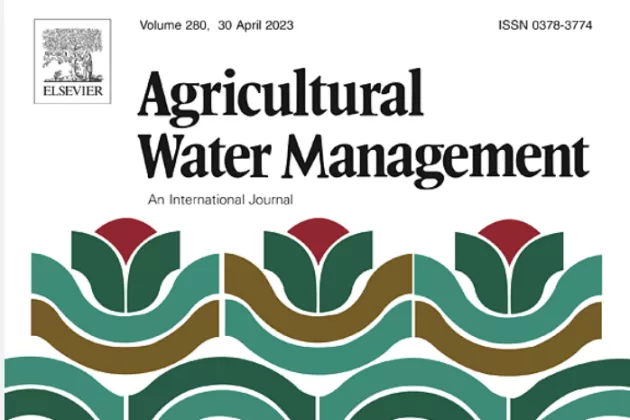CMES Deputy Director Ronny Berndtsson has co-authored the article "Operational loss estimation in irrigation canals by integrating hydraulic simulation and crop growth modeling" together with Habib Karimi Avargani (University of Tehran), S. Mehdy Hashemy Shahdany (University of Tehran), S. Ebrahim Hashemi Garmdareh (University of Tehran), Abdolmajid Liaghat (University of Tehran), Guanghua Guan (Wuhan University), Farhad Behzadi (University of Tehran), and Sami Ghordoyee Milan (University of Tehran).
Abstract
Identifying operational losses in irrigation canals can be difficult due to inaccurate simplification in designing and operating national guidelines. However, this study aims to provide a practical solution to this problem by identifying operational losses, which are the primary cause of off-farm irrigation water losses. The method involves simulating the daily delivered water to individual Irrigation Units (IUs) through off-take structures using hydraulic simulation. The daily agricultural water demand for individual IUs is then calculated using a crop growth model and irrigation system efficiency. This approach offers an effective way to accurately identify operational losses in agricultural water distribution systems. The Roodasht irrigation district in central Iran was used test proposed method. The water distribution simulation was conducted using an open-source Irrigation Conveyance System Simulation (ICSS) in three separate scenarios, including 29, 22, and 55 days, and each showed a typical operation based on history. The IUs’ agricultural water demand, at each off-take location, was calculated by the Aquacrop estimation including the existing information of the on-farm water efficiency depending on irrigation system. According to the study, the amount of water lost daily varied between 60% and 82%, 50–70%, and 44–61% in IUs that used drip, sprinkler, and surface water application systems, respectively, during normal operational scenarios. In situations where water was scarce, the water loss range was 4–87%, 68–80%, and 60–70%, respectively.The results of this study confirmed that losses in the conveyance and distribution systems varied according to the distance from the source and were often higher than the recommended guidelines for irrigation system design and operation (such as the 10–20% suggested in Iranian guidelines). The proposed methodology can be used to improve estimation of actual water losses for irrigation districts with similar operation systems and climatic conditions.
Keywords: sustainable water management; water conservation; water accounting; hydrodynamic simulation model; AquaCrop




